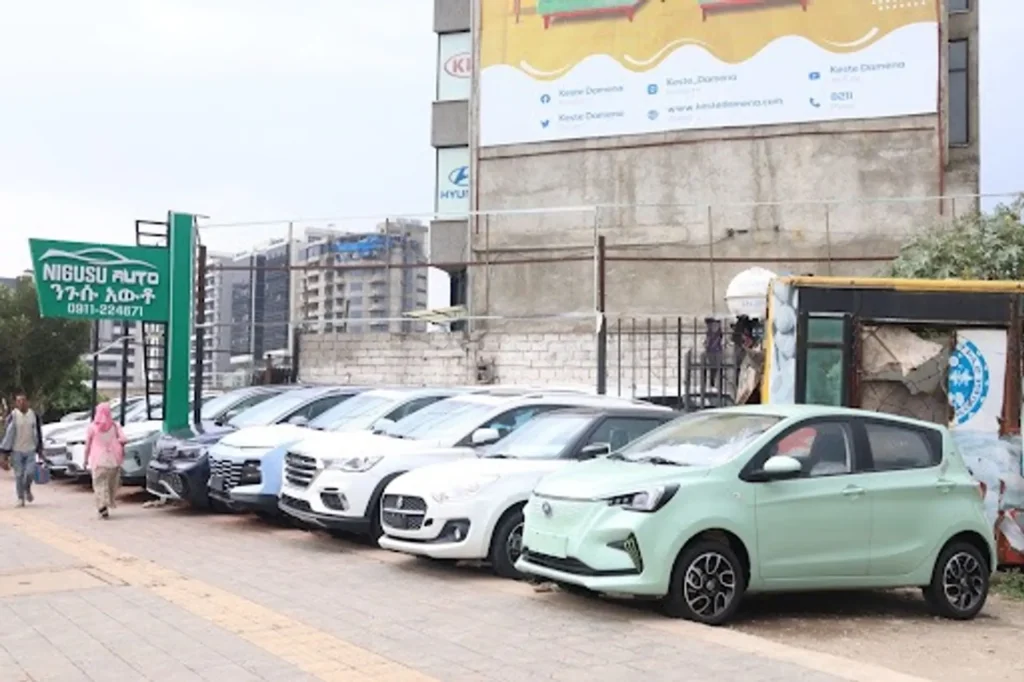Ethiopia is rapidly emerging as a pioneering force in Africa’s electric vehicle (EV) transition, demonstrating a robust commitment to sustainable transportation and a greener future. With ambitious government initiatives, strategic investments, and innovative solutions, the nation is actively shaping its mobility landscape, though not without facing significant hurdles. This post explores the current state of electric mobility acceptance in Ethiopia, highlighting its progress, challenges, and the promising outlook ahead.

Table of Contents
- A Bold Vision for Green Transportation
- Current Progress and Infrastructure Development
- Strategic Partnerships and Economic Impact
- Navigating the Challenges: A Bumpy Road Ahead
- Innovative Solutions: The Role of Battery Swapping
- Conclusion: A Model for Sustainable Development
- References
A Bold Vision for Green Transportation
Ethiopia’s journey towards electric mobility is characterized by a bold vision and proactive policy-making. The government has set an ambitious target to have 500,000 electric vehicles operating nationwide within a decade, aiming to replace 95% of conventional fuel-powered vehicles [1]. This transition is driven by a desire to reduce the substantial $5 billion spent annually on fuel imports and to leverage the country’s abundant hydropower resources, which generate 96% of its electricity [3].
Key policy decisions underscore this commitment. Since January 2024, Ethiopia has banned the import of gas-powered cars, a groundbreaking move that positions it as a leader in Africa’s shift to EVs [3]. This ban is complemented by comprehensive tax exemptions on EVs and their components, along with reduced tariffs for EV imports, making electric vehicles more attractive to consumers and investors alike [3].
Current Progress and Infrastructure Development
Significant strides have been made in developing the necessary infrastructure to support this transition. In March 2025, the Addis Ababa City Administration introduced 100 electric buses into its public transportation network. These buses, locally assembled by Belayneh Kindie Metal Engineering Complex using Chinese components, are equipped with advanced Intelligent Transportation System and Fare Collection System technologies, offering a more comfortable and environmentally friendly commuting option for residents [1].
Charging infrastructure is also expanding. Plans are underway to install charging stations every 50-120 kilometers across the country in 2025 [1]. Ethio Telecom, a major telecom provider, unveiled its second ultra-fast EV charging station in Addis Ababa in April 2025, expanding its network to accommodate 32 vehicles simultaneously. Ethiopia currently offers diverse charging options, including home charging, public service stations, and commercial charging stations, ensuring broader accessibility for various user needs [1].
Strategic Partnerships and Economic Impact
The potential for Ethiopia to become a regional industrial hub for electric mobility is attracting international attention. Volkswagen Group Africa is actively evaluating the establishment of an EV manufacturing facility in Ethiopia [2]. Such an investment would not only catalyze industrial growth and create jobs but also stimulate the development of a robust supply chain ecosystem. Furthermore, it would foster knowledge transfer and capacity-building in advanced manufacturing, reinforcing Ethiopia’s climate goals by accelerating the transition to low-emission transport systems [2].
Navigating the Challenges: A Bumpy Road Ahead
Despite the promising outlook, Ethiopia’s EV shift faces considerable challenges. Infrastructure gaps remain a significant concern; as of April 2025, there were only 50 urban charging stations, and rural areas suffer from limited electricity access (a mere 12%). Frequent blackouts, averaging 46 hours, further complicate reliable charging [3].
Affordability is another major barrier. Electric vehicles, with used models starting at $35,000 and new ones ranging from $38,000 to over $100,000, are largely unaffordable for most Ethiopians, especially given that only about 5% of adults have access to formal financing [3]. This high cost, coupled with a lack of consumer awareness about EV technology and maintenance, contributes to reluctance among potential buyers [3].
Regulatory issues also pose hurdles. The ban on gas-powered vehicle imports has inadvertently led to black markets for banned vehicles due to fragmented government agencies and unclear legislation. Complicated registration and road use rules for smaller EVs further impede progress. Moreover, a severe skills shortage means few mechanics are trained to service EVs, discouraging adoption and impacting local car businesses that struggle to adapt to the rapid influx of Chinese EVs, often with questionable reliability and support networks [3].
Innovative Solutions: The Role of Battery Swapping
To overcome infrastructure limitations, innovative solutions like battery swapping are gaining traction. Companies such as Dodai, an e-mobility firm in Addis Ababa, are establishing battery swapping stations across Ethiopia. These stations allow riders of electric bikes to quickly exchange depleted batteries for fully charged ones, minimizing downtime and making charging infrastructure more accessible and practical, particularly for those without reliable home or work electricity [4].
This model offers significant benefits for scalability, enabling e-mobility firms to expand rapidly without waiting for widespread individual access to charging points. Dodai plans to install 100 battery swap stations in Addis Ababa this year, with a goal of 300 stations within three years, extending services to other regions of Ethiopia [4].
Conclusion: A Model for Sustainable Development
Ethiopia’s electric mobility revolution is a compelling case study in sustainable development. While the path is fraught with challenges related to infrastructure, affordability, and regulation, the nation’s proactive policies, strategic investments, and embrace of innovative solutions like battery swapping, demonstrate a strong commitment to a greener future. As Ethiopia continues to expand its charging network, attract foreign investment, and address existing hurdles, it is positioning itself not only as a leader in African e-mobility but also as a model for other developing nations striving for sustainable transportation solutions.
References
[1] Ethiopia’s Electric Vehicle Revolution: Driving Sustainable Transportation Forward | Mobility | VUKA Group [2] Volkswagen Poised to Establish Ethiopia as Africa’s Next Electric Mobility Powerhouse – HORN REVIEW [3] Ethiopia bans gas‑powered private vehicles – EV shift faces hurdles – EV24.africa – Buy Electric Cars for Africa [4] Scaling E-Mobility in Africa: How Ethiopia is Pioneering the Transition to Green Transportation — And How Battery Swapping Can Help – Sun Connect News







